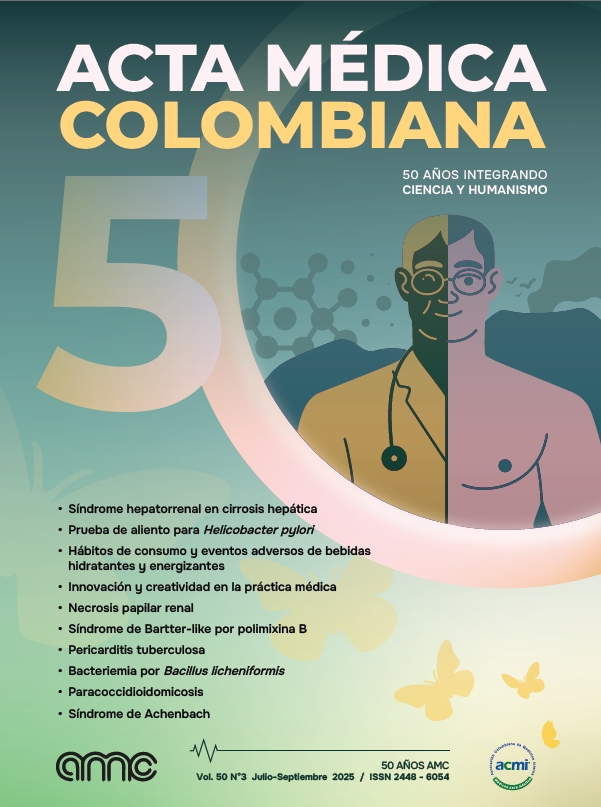Helicobacter pylori prevalence measured by breath test in patients under ambulatory care
Abstract
Introduction: Helicobacter pylori is a highly prevalent bacteria worldwide, associated with various diseases. Its surveillance continues to be relevant for doctors and public health policies.
Objective: to determine the prevalence of H. pylori in a population of ambulatory patients seen by internal medicine in Envigado.
Design and method: this was an observational, descriptive, cross-sectional study carried out between December 2023 and June 2024 at an internal medicine office in Envigado. Intentional, non-probability sampling was employed. Patients of both sexes, over the age of 14, who attended outpatient appointments, were included. Those who could not perform the breath test were excluded. Urea-¹³C was used, and data was collected on Microsoft Excel®, with statistical analysis using SPSS® version 18.
Results: the prevalence of H. pylori was 44.2%. The mean age of those infected was 48.4 years (SD 17.1), with a peak in the 50 – 59-year-old group. Infection was more common in men (47%). In those under the age of 35, the prevalence was 40.7%, and it was more common in young men (21.3 %).
Conclusions: the prevalence found was lower than reported in historic studies, but higher than recent figures. An unusual pattern was found, with a higher frequency of infection in young adults, surpassing what has been described in the literature.
Metrics
Copyright (c) 2025 Juan Guillermo Tamayo Maya, Samuel Tamayo López, Johana Correa Saldarriaga, Diego Alberto Palacio Correa

This work is licensed under a Creative Commons Attribution 4.0 International License.
Acta Medica Colombiana uses the CC-BY 4.0 license. Authors retain all rights over their work.


